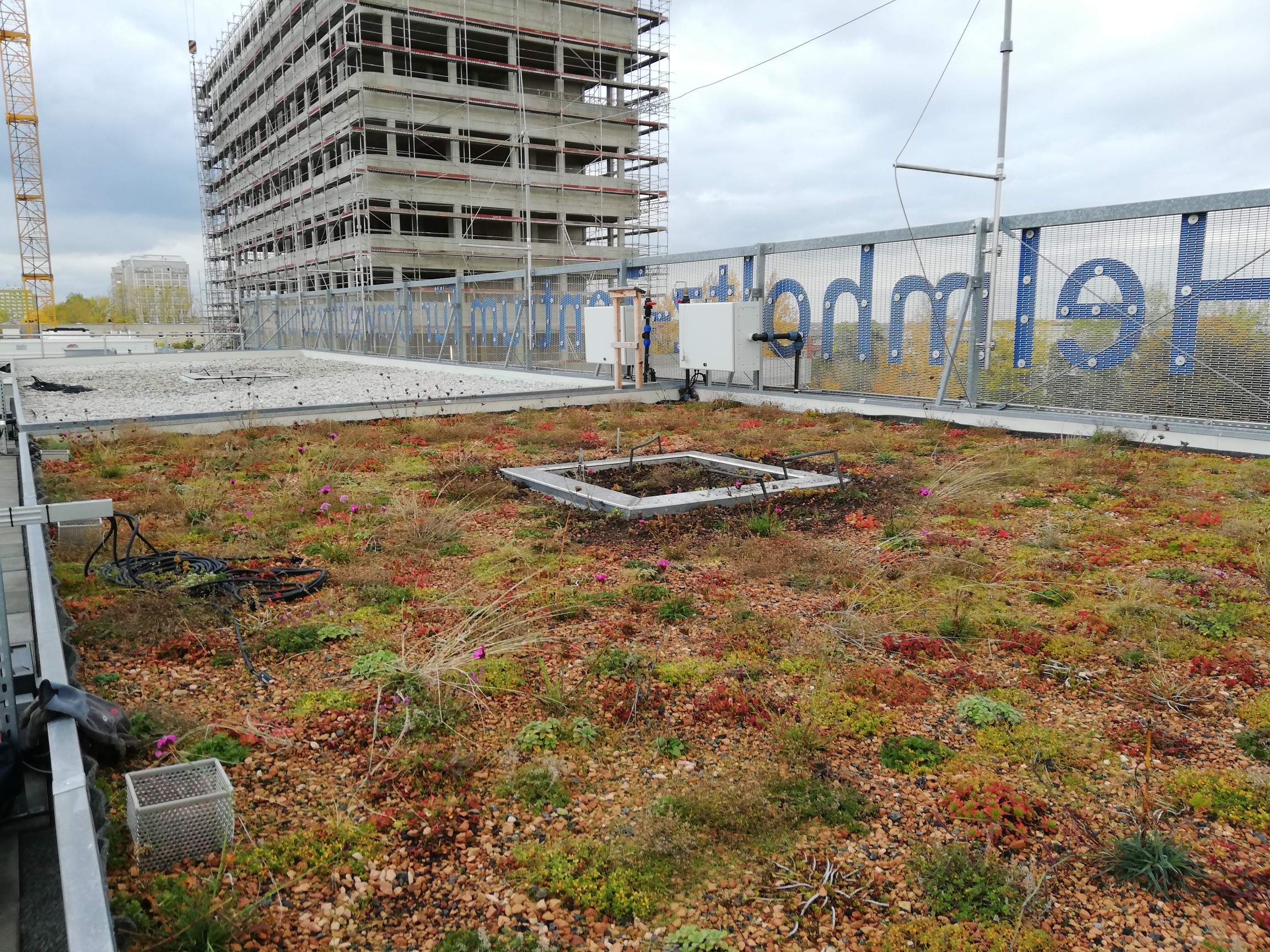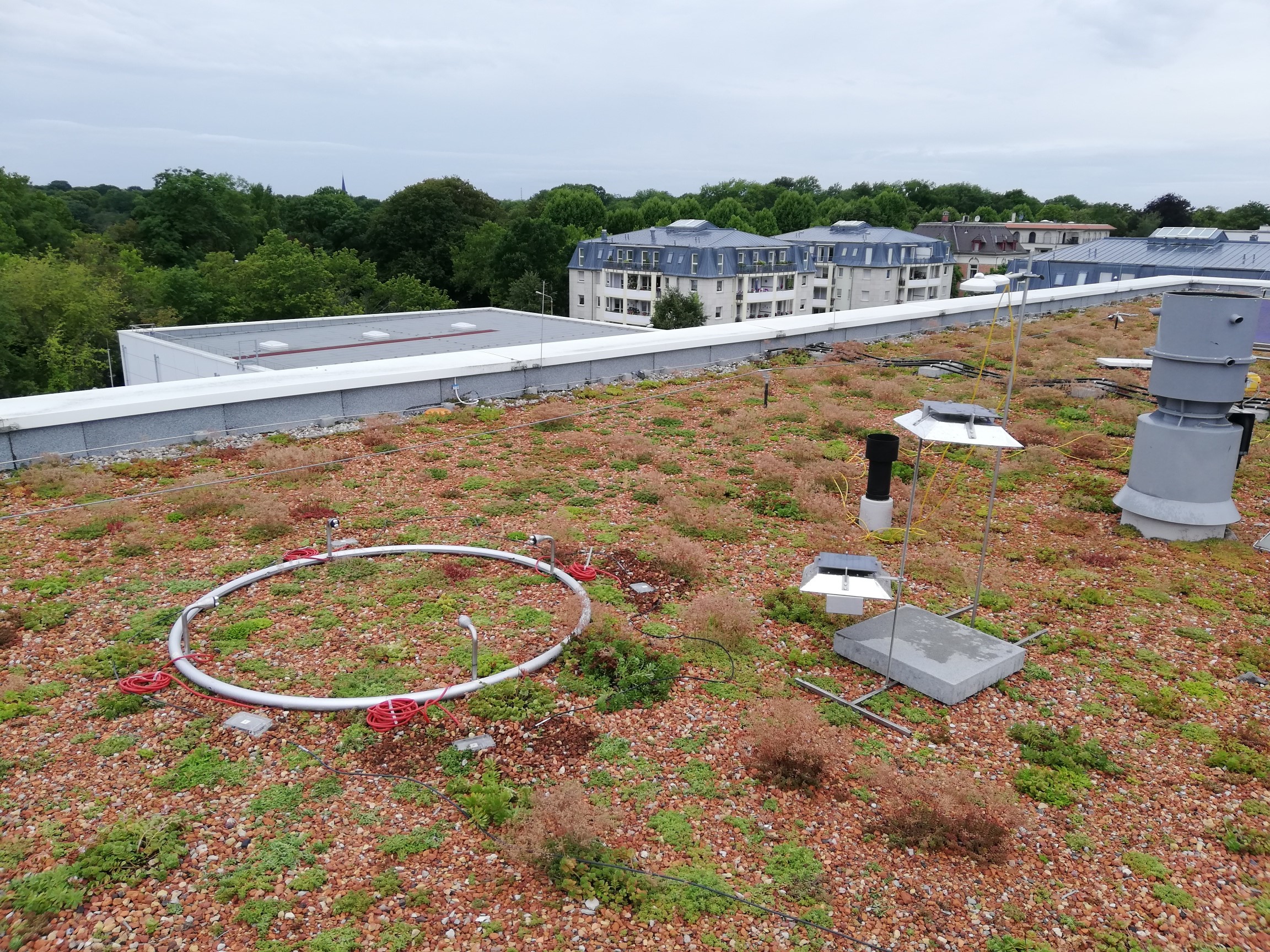Working Group "Climate modelling"
Experimental determination of the surface energy balance of green roofs and their climate impact on ambient air under varying environmental conditions

The potential of green roofs for climate adaptation in urban areas is not fully clarified since differences in air temperature can only be determined to a limited extent. This particularly holds for periods characterized by heat waves when cooling is needed most.
To evaluate the potential of green roofs to adapt climate change on local scale, measurements of energy balance components including radiation and turbulent heat fluxes are performed on the research green roof. Thus, the cooling potential of these various roofs on the ambient air will be determined in dependence of water availability and plant vitality.
The goal is to maximize air cooling with a minimum amount of additional irrigation. In this context, natural water sources like the formation of dew and rime will be investigated as well. The experimentally determined findings will also be combined with micrometeorological simulations, allowing conclusions concerning the adaptation potential on a larger scale.

Head of the working group:
Helmholtz Centre for Environmental Research Leipzig
Department of Urban and Environmental Sociology
